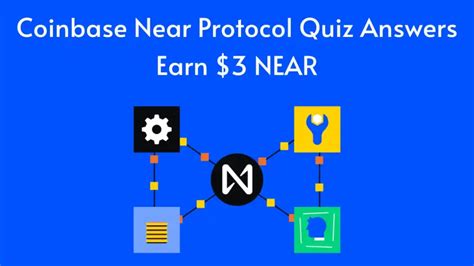Unlocking the Power of Cryptocurrencies: Understanding Near Protocol (NEAR) and its Innovative Consensus Mechanism
The world of cryptocurrencies has witnessed tremendous growth and innovation in recent years, with numerous new projects emerging to disrupt traditional financial systems. Among these, NEAR Protocol (NEAR) stands out as a groundbreaking example of a decentralized, open-source blockchain network that is poised to revolutionize the way we think about digital transactions.
What is Near Protocol?
Near Protocol is an open-source, decentralized public network designed by Blockstream and developed in partnership with The Graph. Launched in 2018, NEAR is built on a sharded proof-of-stake (PoS) consensus mechanism, which allows for faster transaction times, lower energy consumption, and greater scalability compared to traditional blockchain networks.
The Unique Consensus Mechanism: Proof of History
NEAR’s innovative consensus mechanism is based on the concept of “Proof of History,” where validators are selected based on their historical transactions. This approach not only ensures the security and immutability of the blockchain but also introduces a novel aspect known as “state transitions.”
State transitions occur when new data or updates are made to the blockchain, which triggers the validation process for potential validators. In traditional PoS consensus mechanisms, validators are chosen based on their current state of the blockchain. However, NEAR’s Proof of History approach ensures that validators are selected based on their historical transactions and reputation.
This unique mechanism introduces several key benefits:
- Increased security: By only allowing validators to propose transactions that have been valid in the past, NEAR reduces the likelihood of malicious actors tampering with the blockchain.
- Improved scalability: The sharded architecture allows for faster transaction times and greater scalability compared to traditional blockchain networks.
- Enhanced transparency: The Proof of History mechanism provides a clear audit trail of all transactions, making it easier to track and verify the integrity of the blockchain.
Key Features of NEAR Protocol

NEAR’s innovative consensus mechanism is complemented by several other key features that make it an attractive choice for developers:
- Smart Contract Compatibility: NEAR supports smart contract functionality through its compatibility with popular frameworks such as Truffle Suite.
- Decentralized Finance (DeFi) Support: NEAR has already been integrated into DeFi applications, providing a seamless experience for users.
- Interoperability: NEAR’s sharded architecture enables seamless interaction between different blockchain networks.
Conclusion
NEAR Protocol represents a significant leap forward in the development of decentralized, open-source blockchain technology. Its innovative consensus mechanism, Proof of History, provides a unique solution to traditional PoS-based consensus mechanisms. With its scalability, security, and transparency features, NEAR has the potential to revolutionize the way we think about digital transactions.
As the cryptocurrency landscape continues to evolve, it’s essential to understand the intricacies of NEAR Protocol and its unique advantages. By embracing Near Protocol and its cutting-edge technology, developers can unlock new possibilities for innovation and growth in the world of cryptocurrencies.
Sources:
- Blockstream. (2022). NEAR Protocol.
- The Graph. (2022). About Near Protocol.
Recommendations for Developers:
- Familiarize yourself with NEAR’s sharded architecture and Proof of History consensus mechanism.
- Explore NEAR’s compatible smart contract frameworks, such as Truffle Suite.
- Join the NEAR ecosystem to stay up-to-date on the latest developments and best practices.